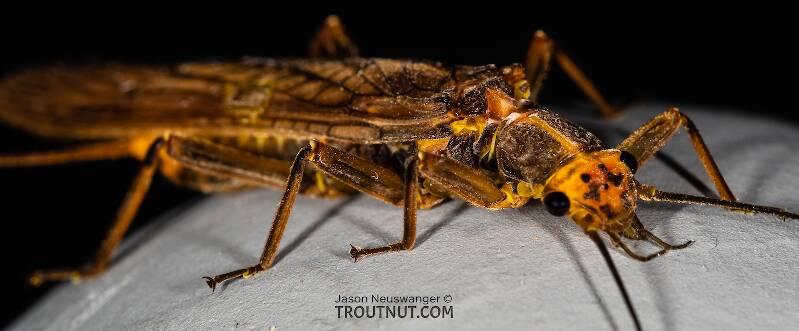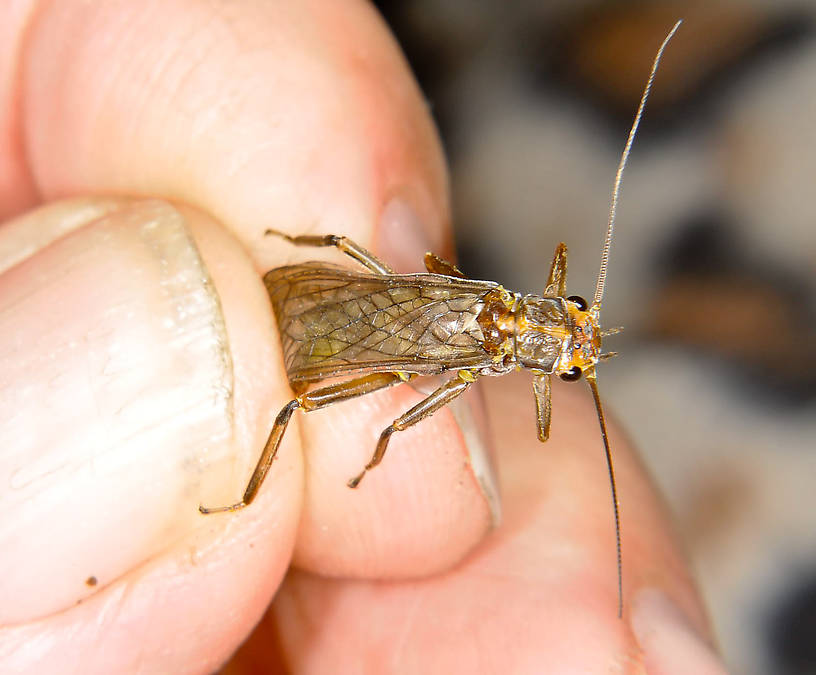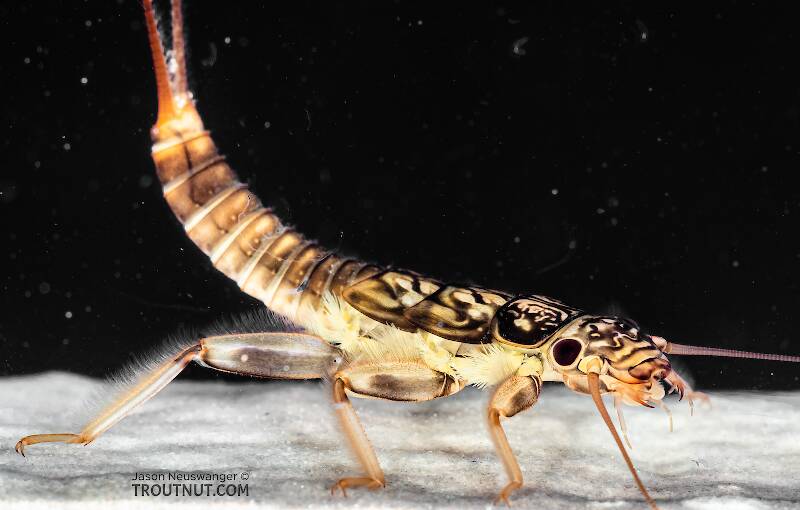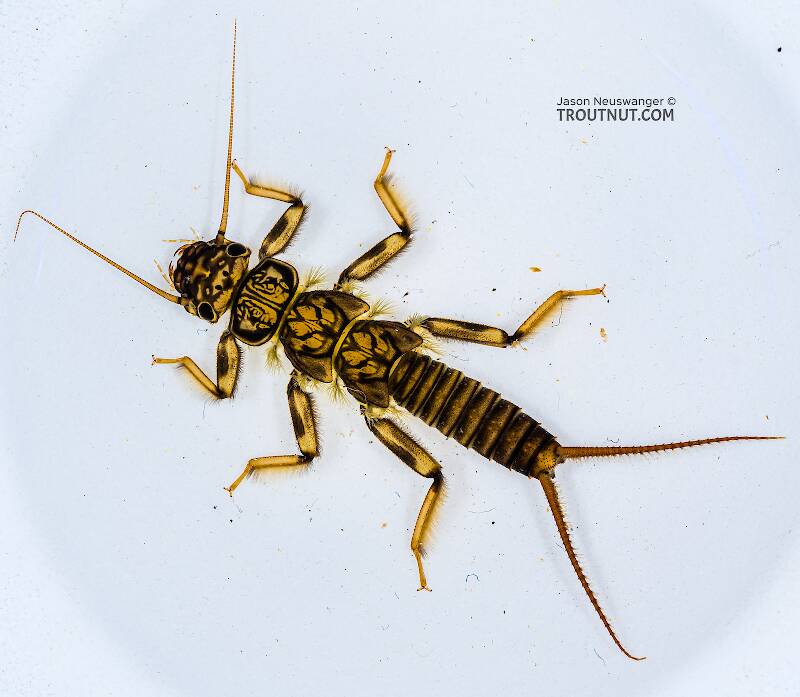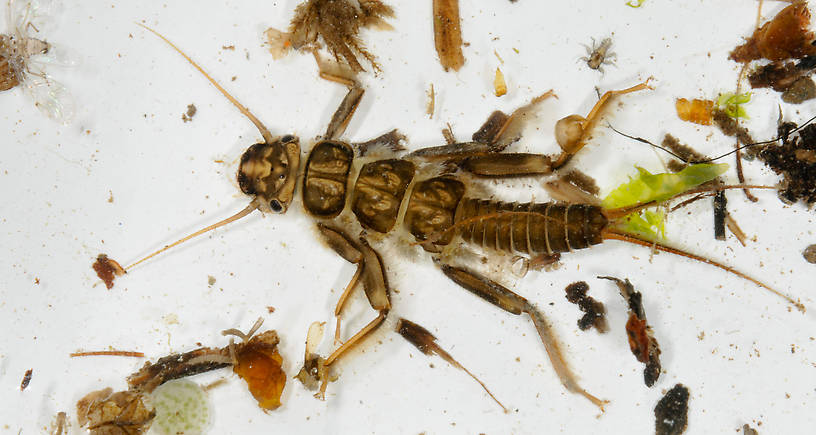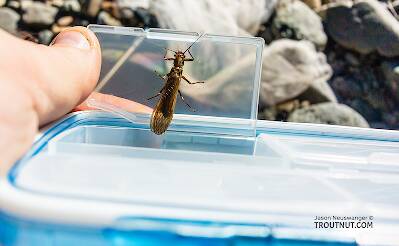
Hex Mayflies
Hexagenia limbata
The famous nocturnal Hex hatch of the Midwest (and a few other lucky locations) stirs to the surface mythically large brown trout that only touch streamers for the rest of the year.
Featured on the forum

Troutnut is a project started in 2003 by salmonid ecologist Jason "Troutnut" Neuswanger to help anglers and
fly tyers unabashedly embrace the entomological side of the sport. Learn more about Troutnut or
support the project for an enhanced experience here.
Stonefly Genus Calineuria (Golden Stones)
The only species in this important western genus is Calineuria californica. See its species hatch page for more information.
Genus Range
Identification
To determine whether a specimen of Perlidae belongs to Calineuria, use the Key to Genera of Perlidae Nymphs.
Specimens of the Stonefly Genus Calineuria
1 Male Adult
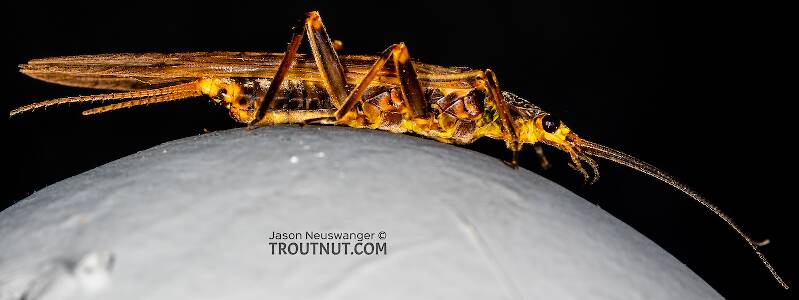
A few of these larger stoneflies were fluttering around the South Fork on an evening dominated by much smaller species.
This one has been difficult to identify. I can't spot any of the gill remnants characteristic of Perlidae, but the wing venation seems to point in that direction. I tried keying it out as Perlodidae but arrived at Isoperla, every western species of which has significantly smaller bodies than this one.
Edit: See forum comments for a likely correct identification.
This one has been difficult to identify. I can't spot any of the gill remnants characteristic of Perlidae, but the wing venation seems to point in that direction. I tried keying it out as Perlodidae but arrived at Isoperla, every western species of which has significantly smaller bodies than this one.
Edit: See forum comments for a likely correct identification.
2 Female Adults
3 Nymphs
1 Streamside Picture of Calineuria Stoneflies:
Start a Discussion of Calineuria
Stonefly Genus Calineuria (Golden Stones)
Taxonomy
Species in Calineuria
Calineuria californicaWestern Stoneflies
6
54
Species in Calineuria: Calineuria californica



